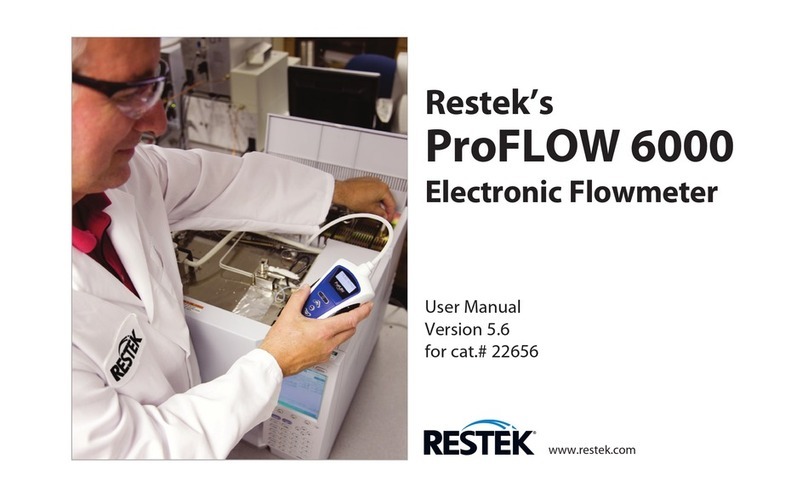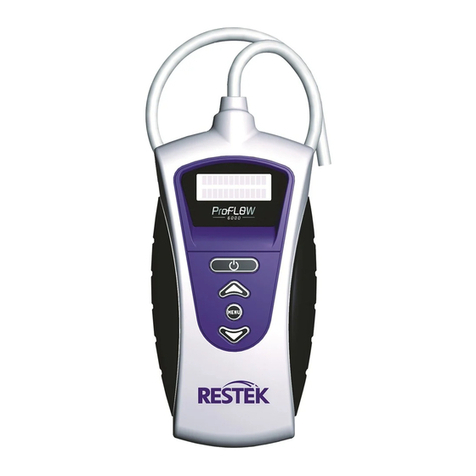4www.restek.com
5.0 Prior to peration
Verify the operation of the Leak Detector before each use by sampling gas from a GC split vent, or other source of hydrogen or
helium. Also, visually inspect the probe tip, reference gas inlet, and exhaust port for obstructions (Figure 1).
IMP RTANT:
Fittings being checked must be clean and dry; liquid leak detecting agents, dust, and other debris may damage
the Leak Detector if drawn into the probe.
The Leak Detector responds to almost any gas you can smell, and many gases that you can’t smell. Solvent vapors, split vent
exhaust, or even strong air currents around the probe or reference inlet can cause instability or false positive readings. Be care-
ful not to breathe into the reference inlet when checking for leaks or to cover/block the inlet with your hand.
6.0 Detecting Leaks
Slowly move the probe tip around fittings and other potential leak sources. If the Leak Detector senses a gas other than air, the
LED bar graph will begin to light, and an alarm will sound when the last LED light illuminates. The red LED lights indicate
helium and hydrogen leaks. The yellow LED lights indicate a nitrogen, argon, or carbon dioxide leak. Remove the probe from
the vicinity of the leak and allow the unit to return to zero. If a large amount of gas has entered the probe, it may take a few
seconds for the instrument to clear itself. Please do not attempt to zero the unit while it is clearing out the gas from the probe.
This may cause the unit to malfunction. Place the probe near the leak again to confirm its location. The reference gas inlet
(Figure 1) must not be restricted or the unit will not operate correctly. Similarly, the exhaust port allows the gas being tested to
exit the Leak Detector and must remain unobstructed. The exhaust port is located in the probe docking station.
CAUTI N:
This unit is
NOT
designed for determining leaks of combustible gases. A combustible gas detector should be used
for determining combustible gas leaks in a hazardous environment.
7.0 Specifications
Power Rating: 12 Volts DC (battery charger supplied) Warranty: One year warranty.
Battery Rating: 6 hours normal operation Certifications: CE and apan
perating Temp. Range: 32°–120°F (0°–48°C) Compliance: WEEE, RoHS
Humidity Range: 0–97%






























